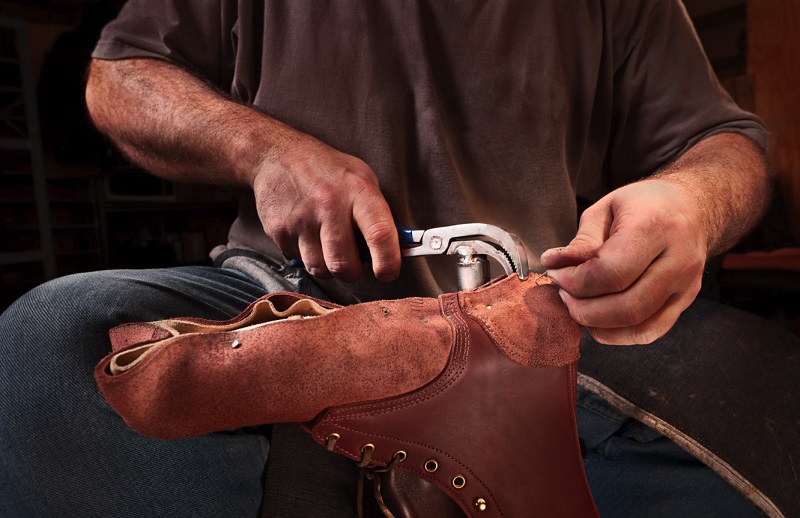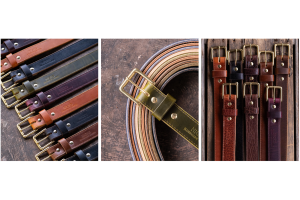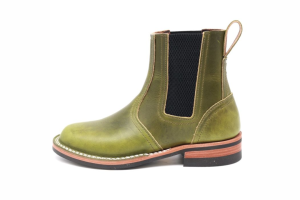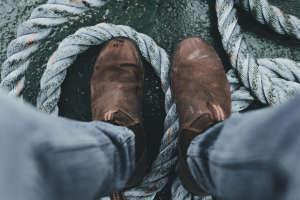Is Roughout Leather Good For Work Boots?

You might notice a number of custom work boots offered by Nick's Boots and others are offered in roughout leather. You'll likely notice that it looks fuzzier and feels softer than typical leather, which is usually smooth and tough.
At least, quality full grain and top grain leather are tough. Inferior leather won't hold up as long, which is something that sets quality leather work boots apart from inferior boots found in many stores.
What is roughout leather and is it a good choice for work boots? Actually, yes! But let's go into that a bit more.
Roughout Leather Explained
So, to explain rough out leather, one has to understand leather itself. What IS leather?
The leather is the dried, cured skin of an animal, typically cow but horsehide, wild game (deer/elk/moose) and kid (juvenile goat) hide can be used as well. The meat and fat have been cut away.
The skin has three primary layers. There's the epidermis (the hard outer layer) the dermis (the softer middle layer) and the hypodermis, the squishy part of the skin that connects the skin to subcutaneous fat and muscle tissue.
In leather work, the epidermis is the grain, the dermis is the junction, and the hypodermis is called the corium. The corium is rougher but the grain is smoother. You might suspect the corium, given its fibrous nature, is what's used to make suede.
And you would be right! Suede is made by splitting the corium away from the junction and the grain. A common practice is for a tannery to split the junction and grain away from the corium, selling the latter as suede and the former as full-grain leather (after additional finishing) or top grain leather.
So, what is roughout leather?
The rough out leather is the underside of the grain-corium junction. If you were to saw a leather boot made with full-grain leather in half, the roughout would be on the inside of the boot. In other words, it's typical leather turned inside-out.
Roughout Leather Work Boots
So, given that roughout leather work boots have an outward facing layer that's not as solid as the top of the grain, does roughout leather mean softer work boots? Work boots that aren't as tough?
Actually no. In fact, roughout is arguably a better choice for work boots than the grain.
Huh? That seems crazy!
The reason is actually cosmetic. Roughout, you see, requires drastically less care than the grain does to keep a good appearance. As a result, you can keep a pair of roughout leather boots looking about as good as they do after break-in for quite some time.
You also won't have to get out the polish kit every time they contact...basically anything. The trademark patina and graying effect that grain leather goes through with heavy users won't be nearly as much of a problem. It still requires care to stay in good condition but doesn't require nearly as much as grain leather.
Is Roughout Leather As Strong As Grain Leather?

The rough out leather is THE SAME as grain leather in many cases; it's just that it's turned around! Therefore, a pair of roughout leather work boots actually is just as tough, just as durable, as a pair made with grain leather.
So if you need a strong pair of work boots that are going to take a beating day in and day out, then roughout leather is actually a very good choice since it won't mar a finish and make your work boots look haggard long before they actually are. In fact, it's arguably the better choice in that instance.
Roughout leather can take waterproofing as well, so they are also a decent choice of the outdoor boot as well, nevermind for use as leather work boots.
You do need to care for them, so make sure that occasional treatments with mink oil or other leather conditioner are applied, to keep the leather strong but supple. This will keep your boots in good shape for years to come.





